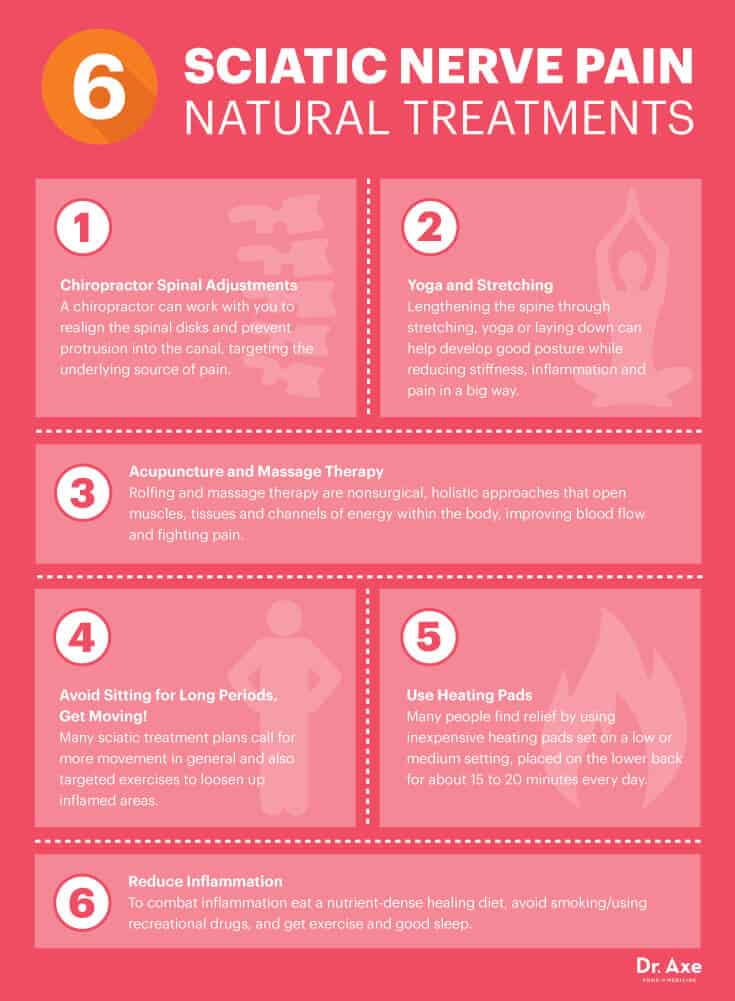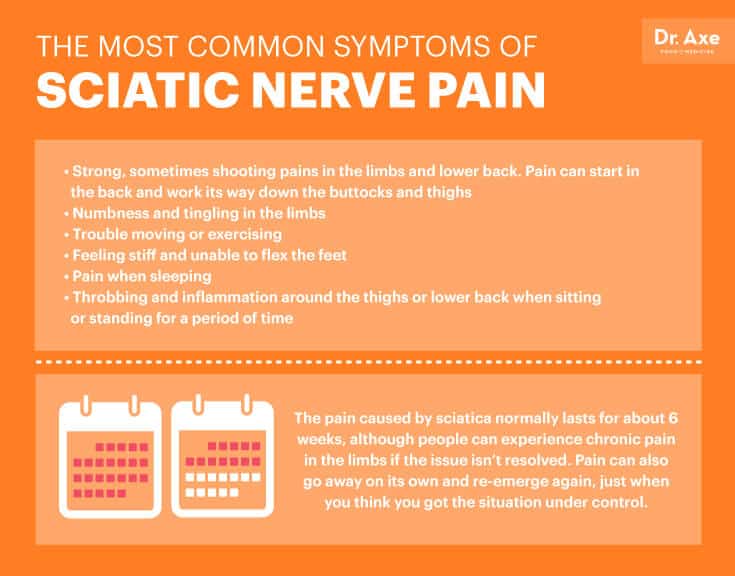This Dr. Axe content is medically reviewed or fact checked to ensure factually accurate information.
With strict editorial sourcing guidelines, we only link to academic research institutions, reputable media sites and, when research is available, medically peer-reviewed studies. Note that the numbers in parentheses (1, 2, etc.) are clickable links to these studies.
The information in our articles is NOT intended to replace a one-on-one relationship with a qualified health care professional and is not intended as medical advice.
This article is based on scientific evidence, written by experts and fact checked by our trained editorial staff. Note that the numbers in parentheses (1, 2, etc.) are clickable links to medically peer-reviewed studies.
Our team includes licensed nutritionists and dietitians, certified health education specialists, as well as certified strength and conditioning specialists, personal trainers and corrective exercise specialists. Our team aims to be not only thorough with its research, but also objective and unbiased.
The information in our articles is NOT intended to replace a one-on-one relationship with a qualified health care professional and is not intended as medical advice.
6 Natural Ways to Relieve Sciatic Nerve Pain
March 9, 2018

Ever wake up feeling agonizing pain all the way from your upper thighs to your feet? Do you deal with nagging lower back pain that spreads downward through your buttock and won’t seem to quit no matter what you try? You could be dealing with sciatic nerve pain, also called sciatica, which causes painful throbbing in the lower back and limbs. The pain radiates down the body and can be a symptom of spinal stenosis. It’s also closely related to piriformis syndrome since the piriformis muscle is near the sciatic nerve.
The problem all starts in the lower spine and can come and go, but one thing’s usually certain — when sciatic nerve pain rears its ugly head, you’re dealing with a whole lot of discomfort that can quickly ruin your day. Given that the sciatic nerve is the largest single nerve in the body, this makes sense.
The good news is there are remedies for back pain that treat sciatic nerve pain and improve spine health. What are these natural sciatica treatments, and what causes this debilitating lower-body pain? Let’s investigate.
What Is Sciatic Nerve Pain?
When certain nerves become pinched in the lower spine running along the sciatic nerve — which is the largest single nerve in the human body — intense pain can develop that runs the entire length of the legs. Sciatic nerve pain is usually repetitive, felt primarily in one leg and can be described as “intolerable” by most people who experience it (something like a very bad toothache!). What makes matters worse is that many people don’t know how it developed in the first place or what they can do to prevent lower back pain from returning. Plus, it can difficult to discern between sciatica and arthritis, often making it difficult to diagnose.
While many people turn to pain-reducing medications or even surgery to correct the problem, studies have actually found that less invasive treatment options — like chiropractic spinal adjustments — can be just as effective for healing sciatic nerve pain. In fact, a 2010 study published in the Journal of Manipulative Physiological Therapies found that nearly 60 percent of patients with sciatica who failed other medical treatments benefited from spinal manipulation just as well as if they had undergone surgical intervention! (1)
And there’s more good news: Acupuncture, yoga and massage therapy are other alternative treatment approaches that been have proven to help act like natural muscle relaxers and kick this type of debilitating pain for good.
The best part about trying these natural sciatica treatments? They come with very little risk of negative side effects, don’t harm nerve anatomy, along with numerous other perks like reduced stress levels, better range of motion, protection from injuries and even better immunity.
Natural Treatments
Specific treatment approaches for sciatica always depend on what’s causing the nerve anatomy damage to begin with, so seeing a professional is worthwhile. Some doctors choose to use medications like anti-inflammatory drugs, muscle relaxers or steroids to treat severe sciatic nerve pain, but there’s strong evidence that physical therapy, chiropractor adjustments and stretching can all dramatically improve someone’s condition.
Natural treatments for sciatica include:
1. Chiropractor Spinal Adjustments
There are different types of ruptured or herniated discs — some that cause more nerve pain than others. Prolapse disc bulges are less severe because the outermost layer of the disc is still intact, but extrusion or sequestration disc bulges are more drastic and usually more painful.
These types cause damage to the outer layer of the spinal disc, which leads tissue to spill out from where it’s normally constrained. When the problem progresses, spinal tissue can disconnect from the disc altogether, while disc tissue can enter the spinal canal.
For doctors, it’s important to know what type of spinal injury someone is experiencing in order to know the appropriate treatment approach. Sciatica can be diagnosed during a physical exam by a chiropractor, or your primary doctor might choose to perform X-rays and other tests like a magnetic resonance imaging (MRI) test to investigate the damage in the spine. After diagnosis, a chiropractor can work with you to realign the spinal discs and prevent protrusion into the canal, targeting the underlying source of pain. (2)
One study published in the Official Journal of the North American Spinal Society found that after comparing results in 102 adults who suffered from sciatic nerve pain, those who received chiropractic adjustments experienced less local pain, fewer number of days with pain, and fewer cases of moderate or severe pain compared to people who didn’t receive adjustments. (3)
2. Yoga and Stretching
Moving in certain ways can aggravate sciatic pain, but in some cases it can actually help relieve the pain. Some people find that sitting, standing for a long time and moving around abruptly tend to trigger pain. The types of movements that tend to make pain worse involve scrunching or shortening the spine, such as raising the legs up, bringing the knees toward the chests or squatting.
On the other hand, lengthening the spine through stretching, yoga or laying down can help develop good posture while reducing stiffness, inflammation and pain in a big way.
Studies have found that yoga is safe and effective for people with sciatic nerve pain. (4) Some of the most important movements for preventing sciatic pain target the back, building strength and relaxing stiff areas. Exercises to prevent lower back pain and strengthen the core are even used in rehabilitation settings for sciatic nerve patients following surgery.
An example of an important stretch is a reclining pigeon pose, which targets the piriformis muscle, thus helping prevent inflammation and pressure against the sciatic nerve.
3. Acupuncture and Massage Therapy
You’re probably somewhat familiar with acupuncture — at least the fact that it involves tiny needles. But what is acupuncture exactly?
Acupuncture is a type of traditional Chinese medicine practice that is based on achieving or maintaining better health by opening the body’s natural flow of energy. It uses tiny, virtually pain-free needles to target specific pathways in the body. It’s been approved by the FDA as a treatment for back pain and is supported by various studies for relieving chronic pain of all kinds, including sciatica. (5)
Similarly, rolfing and massage therapy are two other nonsurgical, holistic approaches that open muscles, tissues and channels of energy within the body, improving blood flow and fighting pain. Massage therapy is associated with a reduction in back pain, muscle relaxation and even a healthy release of endorphins, natural “feel good” chemicals that act like pain relievers. (6)

4. Avoid Sitting for Long Periods, Get Moving!
Sitting for many hours, such as working at a desk or watching TV during leisure time, can make matters worse when it comes to bulging discs and back pain. Many sciatica treatment plans call for more movement in general, along with targeted exercises to loosen up inflamed areas.
Including specific stretches or light isometric exercises in your day can help relieve pain in the spine or legs while improving strength. When your symptoms re-emerge or worsen, you can practice certain stretches and exercises at home without the need for a doctor visit.
Try beginning by alternating periods of sitting/lying down with short walks. Aim to take more steps every day, and consider getting a pedometer or fitness tracker, which can motivate you to be more active and increase your walking distance. Then when you’re at home, work on lengthening the spine by improving your posture.
5. Use Heating Pads
Many people find sciatic nerve relief by using inexpensive heating pads set on a low or medium setting, placed on the lower back for about 15 to 20 minutes every day. You can practice this several times a day, about every two or three hours, while at work or when you’re home.
Another similar approach that works well is taking warm baths, since heat loosens up tight muscles and helps increase circulation. The best way to apply heat to the painful area is to purchase a reusable heating pad that either requires hot water or to be plugged in, but you can also buy single-use heat wraps that last for several hours at a time.
While heat can be used to dull pain, just the opposite also works for some people. Some find that applying an ice pack to the back for 10 to 15 minutes every two to three hours does the trick. If pain still doesn’t seem to go away naturally, most doctors recommend taking an over-the-counter painkiller when symptoms get very bad (like Tylenol or ibuprofen/Advil).
6. Reduce Inflammation
It’s estimated that 5 percent to 10 percent of all patients with low back pain have sciatica, but there are a few personal and occupational risk factors that raise the odds for developing sciatic nerve pain. These include older age, being tall, high levels of mental stress, being overweight or obese, sitting for long periods, cigarette smoking, and high amounts of exposure to vibration from vehicles (for example, being a truck driver for a living). (7)
Many of these risk factors cause inflammation, which makes it harder to heal from injuries and increases pain. To combat inflammation and improve your odds of achieving sciatic nerve relief more quickly, make sure to eat a nutrient-dense healing diet, avoid smoking/using recreational drugs and get exercise and good sleep.
Symptoms
It’s estimated that 1 percent to 2 percent of all adults experience a herniated disc at some point that leads to sciatic nerve pain. Much more common in men than in women, and more likely to develop in people over the age of 30, sciatic nerve pain can affect both athletes/those are who are very active or people who are more sedentary.
The most common sciatica symptoms include:
- Strong, sometimes shooting pains in the limbs and lower back — pain can start in the back and work its way down the buttocks and thighs
- Numbness and tingling in the limbs
- Trouble moving or exercising
- Feeling stiff and unable to flex the feet
- Pain when sleeping
- Throbbing and inflammation around the thighs or lower back when sitting or standing for a period of time
How long does sciatic nerve pain last? It normally lasts for about six weeks, although people can experience chronic pain in the limbs if the issue isn’t resolved. Pain can also go away on its own and re-emerge again, just when you think you got the situation under control. If sciatic nerve pain is chronic, because the pain is often so strong and noticeable, most people see a doctor for a solution pretty quickly instead of allowing the pain to linger.
For some people, over time their bodies get rid of the inflamed part of the bulging tissue that’s irritating the spinal nerves without them needing to do anything at all. However, when pain continues for more than six weeks, it’s unlikely that the condition will clear up on its own without treatment.
It’s possible that sciatic nerves can be pinched without any pain forming at all. While sciatica without pain is not very common, it’s possible to have pressure and damage to the sciatic nerve roots and not know it. For example, one study found that 50 out of 100 people who were examined had a bulging spinal disc, but in 20 of the patients, there wasn’t any noticeable pain despite the fact that the disc had entered the surrounding tissue in the spine.
On the other hand, pain can last a very long time in other patients despite trying various treatments. While people with “acute sciatica” (short-term) have a good chance of recovering well, about 20 percent to 30 percent will experience persistent problems after one or two years. (8) In some cases, ongoing numbness in the thighs and buttocks can be a sign of a more serious problem like nerve damage that can become permanent, or even a disease, so it’s always a good idea to see a professional if sciatic nerve pain lasts for a long time.

Causes
The biggest reasons for sciatic nerve pain development are herniated spinal discs and inflammation.
For the majority of people, sciatic nerve pain is caused by a herniated disc in the back, which means a disc in the spine develops a slight crack or tear. A herniated disc sticks out into the spinal canal, which means it alters chemical messages that are sent via the nerves to the limbs. If a spinal disc protrudes out in a certain area, it can “pinch” the sciatic nerve, which is one of the main channels of communication between the spine and legs. The sciatic nerve connects smaller branches of nerves that run through the spinal canal, from the pelvis down the legs and into the ankles and feet. (9) Herniation causes symptoms by putting pressure on the spine.
Not everyone who has a herniated disc (also called a “slipped disc” or a “ruptured disc”) develops sciatica. Those who have been under a lot of wear and tear are more susceptible to having spinal problems of all kinds that can trigger painful symptoms in various regions of the body.
Spinal discs are located between the vertebrae in the spine and are referred to as the body’s natural shock absorbers. They need to remain elastic in order to absorb vibrations and pressure put on the spine from the various movements, positions and situations we put our bodies into. When spinal discs lose their elasticity and stiffen up, it’s much more likely that disc tissue can stick out and irritate regions of the lumbar spine (lower back).
In most adults, herniated or slipped discs are the result of years of aging and putting stress on the body, from things like exercise, poor posture, high levels of inflammation and sometimes injuries. As we age, naturally the spinal discs lose their elasticity as spinal fluid decreases, causing the likelihood of experiencing cracks or tears to increase.
While for many years pinching in the spinal nerves was thought to be the sole reason for sciatica, researchers now know that inflammation worsens the condition and might even be the real cause in some cases. Studies have found that sciatic nerve pain symptoms can occur in the absence of direct nerve root compression, possibly as a result of release of proinflammatory factors. This still causes the same serious pain because it triggers chronic, repetitive firing of the inflamed nerve root. (10)
For people who don’t take very good care of themselves in general — by eating a poor diet, lacking sleep and dealing with lots of stress, for example — the spinal discs age at a quicker speed. And in someone who does have a herniated disc, inflammation only makes the problem worse and usually more painful too.
Final Thoughts
Back pain is something many people deal with at one point or another in their lives, and that often comes in the form of sciatic nerve pain. The best thing you can do is stretch and move your back muscles to heal and prevent this painful condition.
Nonsurgical treatments — like chiropractic adjustments, acupuncture, massage therapy and strengthening/stretching the back — can work just as well as surgeries and medications for treating leg and lower back sciatic nerve pain. I recommend these as the first line of defense — for example, seeing a chiropractor who can adjust the spine and help relieve pressure on the sciatic nerve.
Diet, of course, plays a role in helping reduce inflammation caused by sciatica, which is one of my six natural remedies for sciatic nerve pain. In addition, remember to get up and move and avoid sitting/standing in one place for long periods of time, practice yoga and stretching, use ice and heat therapy, and don’t be afraid to visit a chiropractor or try acupuncture.
If you do these six things, you can relieve your back pain and prevent debilitating sciatica symptoms from becoming a chronic, stressful problem. So get moving, and get your spine back in line!



